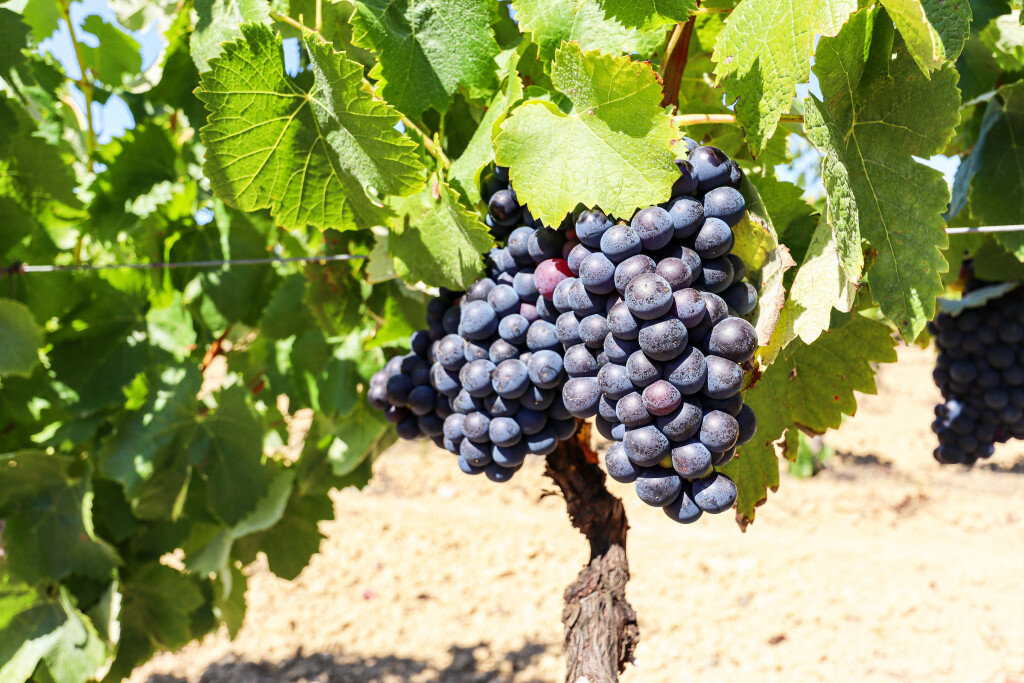 For generations, it was assumed that Corvinone—the big-berried, dark blue-black grape grown sparsely throughout Veneto—was a roly-poly mutation of the locally renowned Corvina grape variety. Thus, it was given the name Corvinone—”big Corvina”—and tolerated for use (in limited quantities) alongside Corvina in some of the red wines of the region, namely the Valpolicellas and the Bardolinos.
For generations, it was assumed that Corvinone—the big-berried, dark blue-black grape grown sparsely throughout Veneto—was a roly-poly mutation of the locally renowned Corvina grape variety. Thus, it was given the name Corvinone—”big Corvina”—and tolerated for use (in limited quantities) alongside Corvina in some of the red wines of the region, namely the Valpolicellas and the Bardolinos.
However, in 1993, S. Cancellier and U. Angelini—as published in the Vignevini Journal of the University of Bologna—gave the world proof that Corvinone is a separate grape variety. Corvinone is, they stated, most likely related to Corvina, but distinct, nonetheless.
According to Italy’s Registro Nazionale delle Variet di Vite, Corvinone tends to break bud fairly late, experience medium timing in flowering and veraison, and is a medium-to-late ripener (germogliamento: tardiva, fioritura: media, invaiatura: media, naturazione: medio-tardiva). Both the bunches and the individual grape berries are noted for being large in size and distinctly larger than Corvina. Corvinone is quite able to respond to water stress and takes well to drying; for this reason, it often goes through the appassimento process for use in Amarone and Recioto.
I have never encountered a varietal Corvinone wine, although they are allowed (at least in theory) to be produced under the IGT Veneto, IGT Vallagarina, or IGT Verona. These wines might show the typical primary aromas of Corvinone, including red and black fruits such as cherry, raspberry, and blackberry; floral notes (violet), cocoa, and tobacco.
We are not quite sure from where the name Corvina, and thus Corvinone, is derived. However, many experts suggest that the grapes were named for their dark blue-black color, reminiscent of the color of the feathers of a raven (corvo in Italian).
For super-advanced students of wine: Late last year, the disciplinari for the wines of Valpolicella (Amarone della Valpolicella DOCG, Recioto della Valpolicella DOCG, Valpolicella DOC, and Valpolicella Ripasso DOC) were all revised to allow 45% to 95% Corvina OR Corvinone grapes in the wines. You might recall that, up until this change, the allowed amount of Corvinone was limited to no more than 50% of the amount of Corvina used. This limitation has been now removed for all the variants of Valpolicella. The allowance for Bardolino DOC and Bardolino Superiore DOCG remains unchanged for now (35% to 80% Corvina, of which 20% may be replaced by Corvinone).
References/for more information:
- Robinson, Jancis, Julia Harding, and José Vouillamoz: Wine Grapes. New York, 2012: Harper Collins Publishers
- Robinson, Jancis and Julia Harding: The Oxford Companion to Wine, 4th Edition. Oxford, 2015: The Oxford University Press.
- Disciplinare – Amarone della Valpolicella updated 2019
- Cancellier, S & Angelini, U (1993). “Corvina veronese e Corvinone: Due varietà diverse”. Vignevini-Bologna. Edagricole SPA. 20: 44
- https://www.wine-searcher.com/grape-2190-corvinone
- http://catalogoviti.politicheagricole.it/scheda.php?codice=328
Post authored by Jane A. Nickles…your blog administrator: jnickles@societyofwineeducators.org